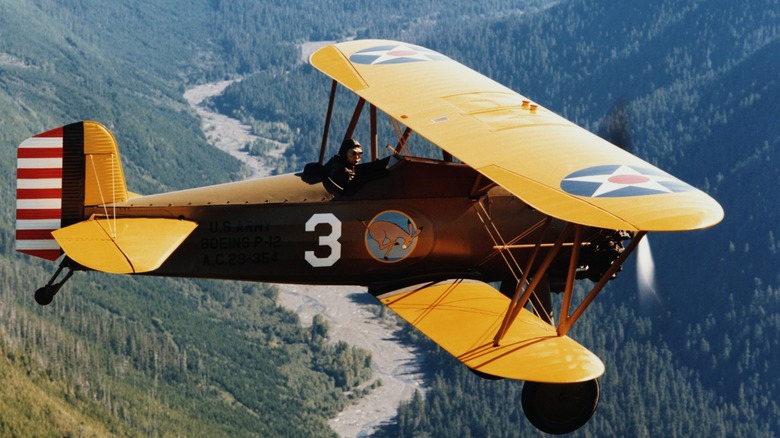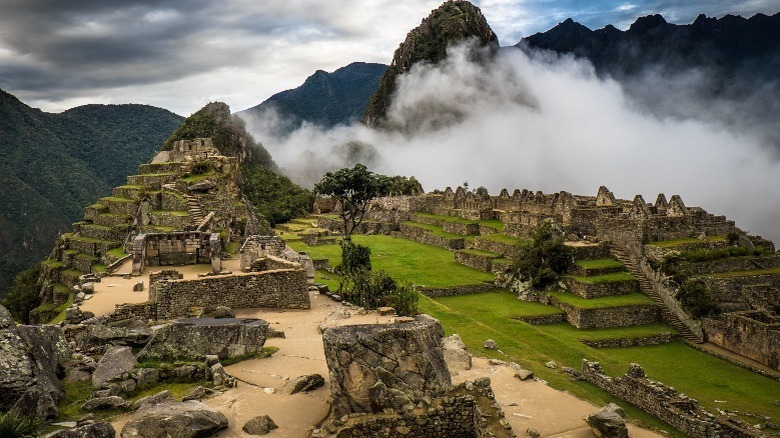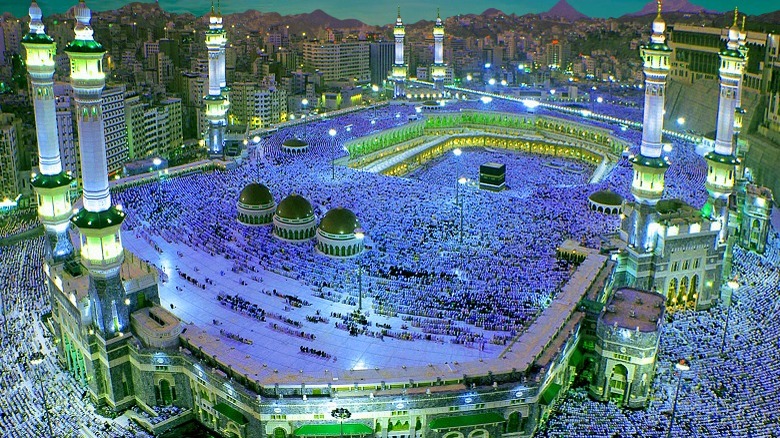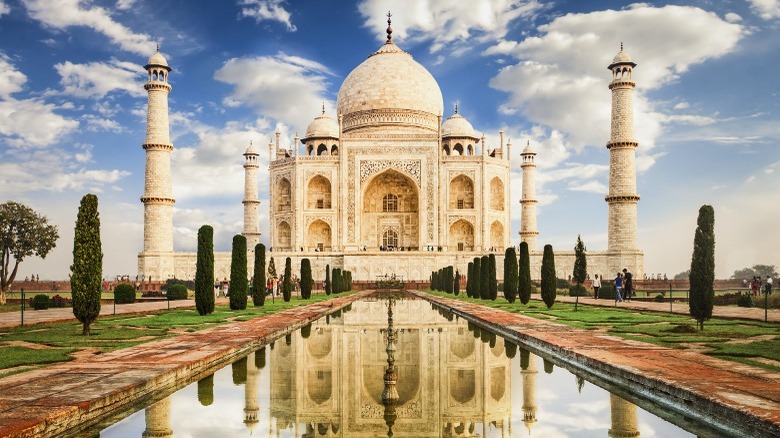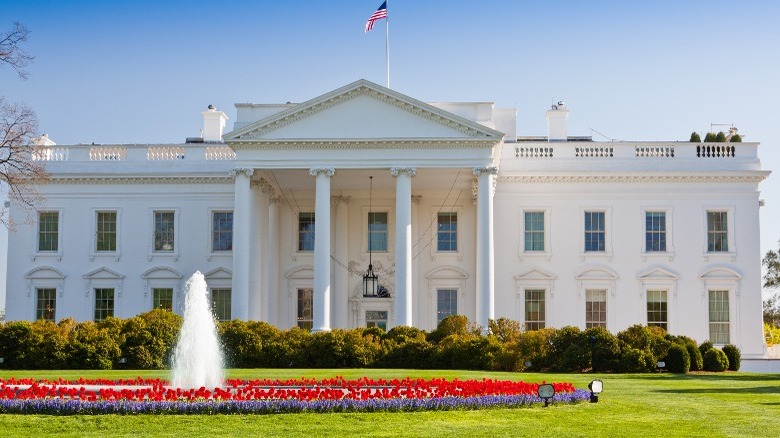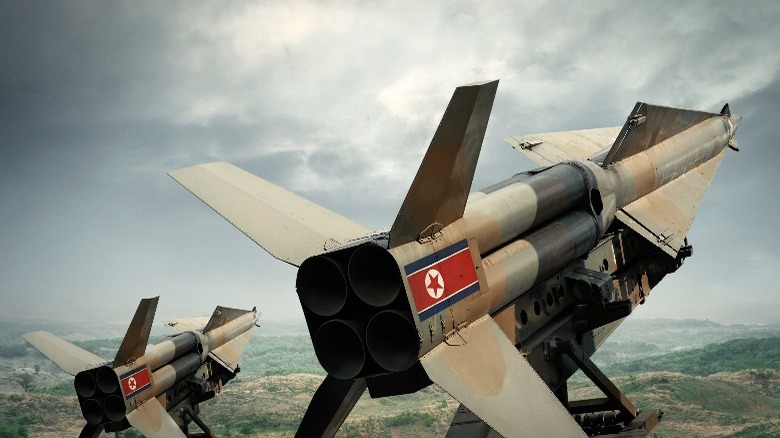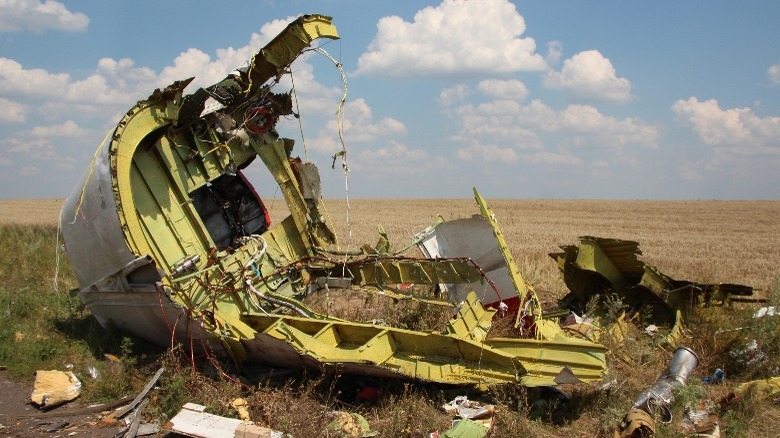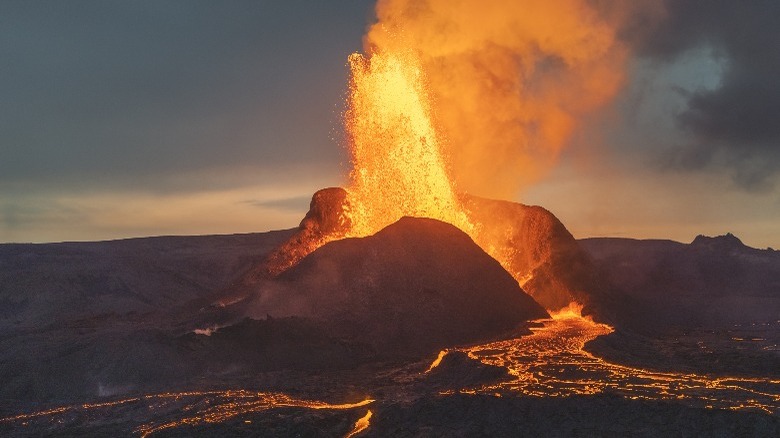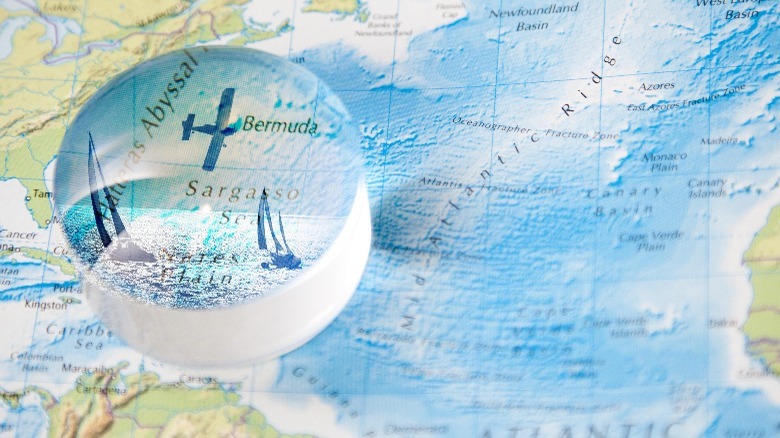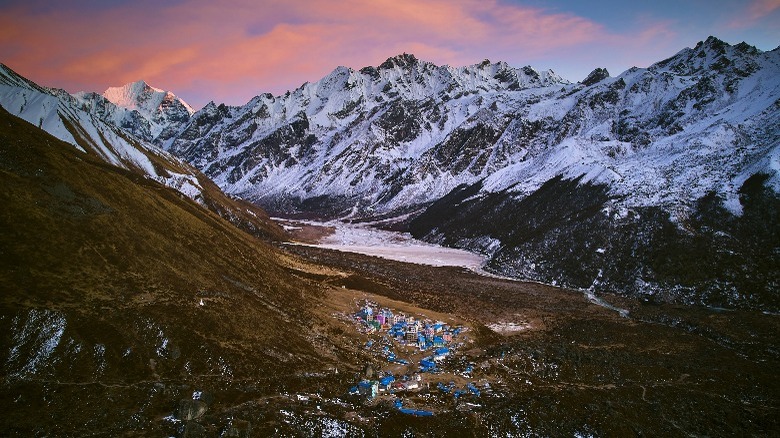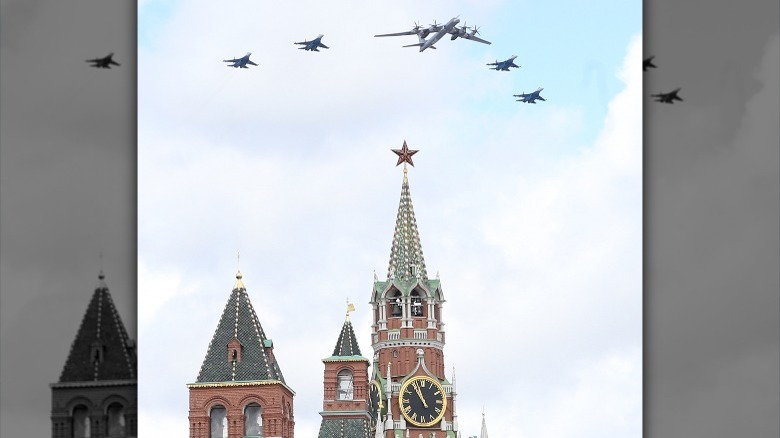Why Planes Don't Fly Over These Places
It's hard to fathom just how much commercial airplanes have changed travel in the century since their invention. Prior to their rise, people's options for far-away travel were much more limited than now. They had to rely on ocean liners to cross the Atlantic or Pacific, or railroads for long-distance domestic travel, which sometimes took days or even weeks. This made long-distance travel impractical for those who could not afford to take significant time off work or school, and a cruise across the Atlantic wasn't exactly cheap, either.
Enter the commercial airplane, which revolutionized the tourism industry within just a few decades. While at first aircraft travel was largely reserved for the wealthy, after the end of WWII it started to become more accessible to more people. With the rise of jet engine-powered aircraft in the 1960s-1970s, even average Joes could now afford to fly, and planes could cover in a few hours what used to take weeks. The commercial airline industry started booming, and today some even take up flying as a hobby in their personal aircraft and helicopters or fly vicariously through drones.
However, not every place is open to air travel, commercial or otherwise, and some areas are heavily restricted or are largely avoided by most aircraft. Reasons vary, from environmental, to security, to urban legend, and not always in places you might expect. From Machu Picchu to the Bermuda Triangle, here's why planes don't fly over these places.
Machu Picchu
History fans are likely familiar with the Incan ruins of Machu Picchu in Peru. They are a testament to the Inca civilization that existed centuries ago and are thought to date back to the 15–16th centuries. The name Machu Picchu stands for "old peak," and it is one of Peru's biggest tourist draws. Machu Picchu is a UNESCO World Heritage site and is located among the Cordillera de Vilcabamba range of the Andes Mountains, near Cuzco.
The site of Machu Picchu is huge and includes massive structures, a cemetery, and a temple, and is at the end of the vastly popular Inca trail. As you can imagine, people from everywhere in the world visit Machu Picchu on vacation, which has had both positive and negative impacts. On one hand, the increased revenue allows for the ruins to be preserved and taken care of. On the other, there have been environmental consequences.
According to the BBC, in 2006 the Peruvian government created a no-fly zone around Machu Picchu in response to low-flying helicopter tours. Environmentalists claimed the tours had the potential to hurt the indigenous fauna and flora in the area. The tours had previously been approved in the 1990s and had only been reallowed for barely a week before being given the ax again. The entire area is now off-limits for aircraft and helicopters in an effort to preserve the site for future tourism, so new generations will always be able to experience the famous ruins.
Mecca and Medina, Saudi Arabia
Located in Saudi Arabia, the holy cities of Mecca and Medina have some of the most important sites in all of Islam. These include the Kaaba and the Great Mosque in Mecca, and the Prophet Muhammad's Mosque in Medina. Every year, millions of Muslims visit Mecca as part of the "hajj," which means pilgrimage, because it is said to be the birthplace of the Prophet Muhammad. However, not everyone is allowed into Mecca, and entry is restricted to only followers of Islam. Still, people visit the cities from just about everywhere on the globe, and they are very important for Saudi Arabian tourism.
As the custodians of Mecca, the Saudi Arabian government takes the security and safety of the city and its people very seriously. In addition to deciding who can enter the city, they also heavily police the cities' airspace, too. As the Agence France-Presse explains, not only are foreigners circumscribed from touching the soil in Mecca, but they are also not allowed in the city's airspace, meaning they can't fly over the city, either.
In addition, both the Great Mosque in Mecca and the Prophet's Mosque in Medina are considered no-fly zones. This is strictly enforced by the Saudi government and covers both Muslims and non-believers alike. The only exceptions to this are helicopters, which are occasionally allowed to fly over the city for news reports or to enforce safety.
The Taj Mahal
A relic of the Mughal Empire from centuries past, the Taj Mahal in Agra, Uttar Pradesh, India, has long been one of the most sought out tourist destinations in the world. It dates back all the way to the 17th century, and it is widely known for its incredible Mughal-era architecture and decorations. The Taj Mahal itself is a giant mausoleum for Mumtaz Mahal, a former 17th-century empress, but that is not the complex's only building. There are also mosques, gardens, and even a museum, and it is recognized as a UNESCO World Heritage site.
Until the 2010s, there were no official restrictions on the airspace surrounding the Taj Mahal, but that changed following a series of complaints. According to The Times of India, in 2015, both archeologists and the Taj Mahal's security service requested that an official no-fly zone be instituted after the Indian military had violated the airspace in the mausoleum's immediate vicinity multiple times, though one of them may have been an accident.
By 2019, the Taj Mahal had secured status as a no-fly zone, but authorities still found themselves warning drone operators who were flying within the no-fly zone (via NDTV). In early 2022, what may have been a commercial aircraft was seen flying above the Taj Mahal, prompting more outcries from archeologists and security officials. Someone captured footage of the airplane flying over the building, which they uploaded to Twitter, showing what may have been a commercial jet.
Washington, D.C.
Considering all of the important governmental installations inside Washington, D.C., including the White House, both houses of Congress, and the many museums and monuments, it's no surprise that it has some of the most restricted air space in the entire world. As the FAA explains, the city is regulated by a "Special Flight Rules Area" (SFRA), that consists of a 30-mile radius outer ring and a 15-mile radius inner ring. The rings are centered on the Ronald Reagan Washington National Airport.
Travel within the 15-mile inner ring, which is designated as the "Flight Restricted Zone" (FRZ), is especially controlled, and even unmanned aircraft like drones are banned from flying (per the FAA). Drones are allowed between the inner and outer rings, but only if they meet several requirements. Commercial airlines flying to Ronald Reagan Airport are allowed within the FRZ without a waiver, but everyone else needs explicit FAA clearance before entering or exiting.
It is possible to get a waiver if you are a civilian aircraft, but you are probably going to need a pretty good reason to do so, as the FAA is widely concerned with making sure all politicians in D.C. are amply protected from any potential incidents. Flying over the White House is pretty much only allowed for the president or those on official presidential business. Penalties for violating the SFRA-FRZ include both civil and criminal consequences and monetary fines.
North Korea
To call relations between the Democratic People's Republic of Korea (DPRK) and the United States poor is an understatement, to say the least. Since 1945, Korea has been divided, with the U.S. supporting the Republic of Korea in the south. Though the Korean War officially ended with an armistice in 1953, tensions have always remained high between the North and the South.
As a result, the FAA does not allow any U.S. civilian aircraft to come anywhere close to the DPRK's capitol at Pyongyang. The FAA first instituted their restrictions in 1997, and they have only gotten more restrictive since then as tensions have grown (per the FAA via the Federal Register). Since 2014, the DPRK has been launching missiles from Pyongyang into the Sea of Japan unannounced, while also jamming navigation and communication networks. This presents a very serious problem for civilian aircraft, as they have no way of knowing when a test might kick-off, and if they experience one, their communications and navigation might not work properly.
In 2022, the FAA put out a release (hosted by OPSGROUP) that mentioned an increase in the frequency of ballistic missile launches from the DPRK and also made some even more chilling observations. The release suggested that the DPRK could potentially be testing nuclear missiles in the area, the consequences of which would be disastrous if they hit a U.S. civil aircraft.
Ukraine
One of the unforeseen consequences of the Russian invasion of Ukraine has been the restriction of civil aircraft into and out of the country. The Russians invaded Ukraine in early 2022, and almost immediately Ukraine responded by shutting down civil air access. The measure was done out of precaution, to ensure that no civilian aircraft were mistaken as military and inadvertently shot down by opposing troops. Tragically, this happened in 2014 during the prior Russian invasion of Ukraine, when a flight from Malaysian Airlines (MH17) was shot down by Russian forces, killing almost 300 civilians.
In addition to the restriction of civilian aircraft, there have also been discussions about implementing an official military no-fly zone over the area of conflict in Ukraine while the war is going on. The President of Ukraine Volodymyr Zelensky has asked the U.S. and NATO to implement and enforce a no-fly zone, but they have so far rejected calls to do so. Their reasoning is that enforcing a no-fly zone would be no easy task, and it also risks escalating the war.
As well, the potential for a Russian-NATO clash to flare up from a downed aircraft in a no-fly zone is enormous, and Russian President Vladimir Putin has warned that creating one would escalate the war internationally. In addition, no-fly zones are extremely costly to enforce, averaging more than $1 billion annually, making it even more prohibitive to introduce and maintain.
Volcanos
Most people probably do not realize it, but in the United States alone there are over 160 active volcanoes. The most well-known is probably Mount St. Helens located in Washington, which famously erupted on May 18, 1980, captivating the nation with its awe-inspiring natural devastation. As incredible as it sounds, the Smithsonian Institution claims that worldwide there are usually double-digit numbers of volcanoes exploding at any given time, including right now.
As you can likely surmise, trying to fly through a volcano is an absolutely terrible idea. As the International Civil Aviation Organization (ICAO) explained in a 2012 report, just being in the area of a volcanic explosion is very dangerous for virtually any aircraft. The hard glass particles and pulverized rock are capable of inflicting serious damage to the outside of an aircraft, and could potentially even obscure the pilots' vision by damaging the windshield. In addition, the air inside of the cabin also has the potential to be contaminated by volcanic ash, and the electrical system is also at risk of short-circuiting.
That doesn't even take into account the engine, which is also very susceptible to damage from volcanic ash. Not only could the glass and rock damage the engine internally after getting sucked in, but due to the low melting point of volcanic ash, it could also cause the engine to completely fail. In short, flying toward an erupting volcano is about the worst thing you could try when behind the controls of an airplane.
Bermuda Triangle
For nearly a century, bizarre and unexplained disappearances within the Bermuda Triangle in the southern Atlantic Ocean have made it one of the most mysterious places on Earth. The intrigue dates back to 1945 when 27 Navy Fliers on "Flight 19" went missing under perplexing circumstances. One afternoon, five Navy bombers had left Florida on a training exercise that was to take them through the triangle, but they never returned.
Transmissions from their attempted return flight indicated they were off-course and lost over the ocean, and when they stopped communicating the Navy sent two rescue planes to investigate. Yet, one of the rescue planes also disappeared, and no trace was found of any of them. Ever since, legends have grown about the supernatural and enigmatic nature of the triangle, which include several other disappearances, and even a few Hollywood films. While it's not an official no-fly zone, countless people are wary of traveling in the area, and many avoid it completely.
However, more reasonable explanations point to the extreme weather conditions in the triangle instead of supernatural events as responsible for most crashes and disappearances, and it appears that's what may have happened to "Flight 19." The Associated Press (via The New York Times) reported the next day that Navy officials had determined the planes had been blown off course from severe winds. In addition, a witness saw a plane explode and vanish into the ocean, indicating they may have crashed into each other in a horrific accident.
Nepal
One of the most difficult aspects of being a good pilot is learning to fly in all types of weather and environmental conditions. Undoubtedly, one of the most challenging of those is trying to fly through mountainous terrain. Everything from the changing wind, to the density and pressure of the air, to the changing temperatures, all contribute to making mountain flying very dangerous and difficult to master. That's why flying in the country of Nepal, situated among the Himalayan Mountains, can be such an arduous task.
According to Bloomberg, from 2012–2022 more than 130 people died in 10 plane different crashes flying in Nepal, and that doesn't include the other 10 plane crashes with survivors. Authorities pointed to the difficult terrain, extreme elevation, and changing weather conditions as catalysts for the majority of the crashes and accidents. Over a similar period from 2009–2018, there were 21 fatal accidents from various types of aircraft that killed more than 150 people (via a 2019 report from the Civil Aviation Authority of Nepal). The country sure is beautiful and is a constant destination for tourists, but getting there safely by air is an unfortunate challenge.
Disneyland and Disney World
Since the 1950s, Americans have been able to experience the magic of Walt Disney in person by visiting either the Disneyland amusement park or Disney World resort complex. Disneyland, located near Anaheim, California, came first in 1955, and Disney World, in Orlando, Florida, opened a few years later in 1971. Today, millions of people visit each park individually, and they are some of the most popular family-friendly tourist destinations in the entire world.
It might sound surprising, but ever since the September 11, 2001 terror attacks in New York City, both Disneyland and Disney World have been considered official no-fly zones. According to the FAA's Disneyland Notice to Airmen (NOTAM) and Disney World NOTAM, the no-fly zones extend for a 3-mile radius from each park and cover up to 3,000 feet in elevation. They are both considered "National Defense Airspace," and both manned and unmanned aircraft, including drones, are prohibited from flying within it.
However, it might not be that way for long. As part of Florida Gov. Ron DeSantis and the GOP's feud against Disney, conservative lawmakers have attempted to introduce legislation to strip Disney's no-fly zone status away. The legislation was introduced by Rep. Troy Nehls from Texas and had several co-sponsors, but it was never voted on and was never been implemented.
Russia
The Russian Invasion of Ukraine in 2022 did not just affect air travel within Ukraine, but it turns out it is also affecting civilian air travel in Russia, too. Aircraft registered to many Western nations, including the United States, Canada, and Britain, are all prohibited from entering any part of Russian airspace. This has been the case since shortly after the Russian invasion began, and was done as a response to Western nations banning Russian airplanes from their airspace.
While this was done as a punitive measure by Russian President Vladimir Putin, it's probably something most Western nations would have imposed on their registered aircraft, anyways. This is because, similar to Ukraine, the likelihood of a mistake occurring and a civilian liner being inadvertently shot down is just too much of a risk to take. This danger has been highlighted by some of the conflicts that have occurred in Russian airspace in the year since the invasion began, which include drone crashes and other harassment between Russian and Western aircraft.
The ban from Russian airspace has affected travel routes not just to Russia, but to other destinations around the globe. This is because, as The New York Times explains, some airliners are forced to take alternative routes that are less fuel efficient, leading to unnecessary stops and half-full planes. There are still some foreign aircraft allowed in Russian airspace, and they have been able to take advantage of shorter routes, potentially costing the American airline industry billions each year.
